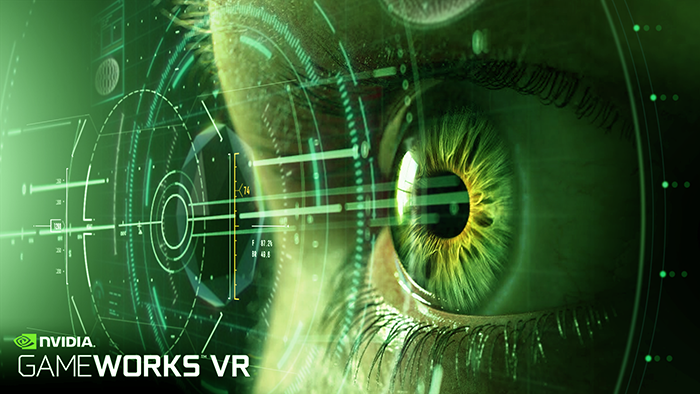NVIDIA has just announced a new tool for game developers to work with virtual reality under their own GameWorks VR label. The slew of programming tools and graphic engine updates aim to ensure the best possible performance for computers that deliver virtual reality experiences.

From the much touted Occulus Rift which had iD software co-founder John Carmack behind it and Valve’s own HTC valve, virtual reality has remained just slightly out of reach by the consumer market wanting their own Holodeck experience. That is all set to change as the Occulus Rift is set to be released in 2016.
Hundreds of game developers are already working on numerous games for VR devices so with the new tools from Nvidia, the world’s leading graphics hardware manufacturer, these developers will take a giant step forward in making our dreams of virtual reality well a reality.
These new GameWorks VR tools aim to help a developer ensure that a computer only has to render the graphics as they will be delivered to a set of VR goggles. Graphics are warped for use in virtual reality to properly account for the special optical lenses used to create a wide field of vision for the user.
Up to now, graphics engines have usually rendered VR images as though they were delivered on a regular screen and then the warping effects are applied. This is actually a wasted effort as many unseen parts images are still rendered. GameWorks VR seeks to ensure that only the parts needed for the final virtual reality output are rendered.
By removing any unnecessary elements during the graphic rendering process, NVIDIA aims to help developers make their VR look as smooth as possible. After all, nothing breaks a gamer’s immersion into a virtual world more than stuttery graphics or texture pop-ins.
NVIDIA is the undisputed market leader in graphics processing hardware, controlling about 70% of the current market for desktop and laptop PCs. Its main rival, AMD is well behind in the PC market but does power the graphics system on the 8th generation of home consoles by Microsoft, Sony and Nintendo.
About Post Author
You may also like
-
ASUS Vivobook S 16 OLED and Vivobook S 14 OLED Officially Launched in Malaysia
-
HONOR Launches Three New Magic Series Flagships in Malaysia
-
Samsung Galaxy A55 5G and Galaxy A35 5G Now Available in Malaysia
-
Samsung Galaxy A55 5G and Galaxy A35 5G Officially Announced
-
Xiaomi 14 Series Officially Launched in Malaysia